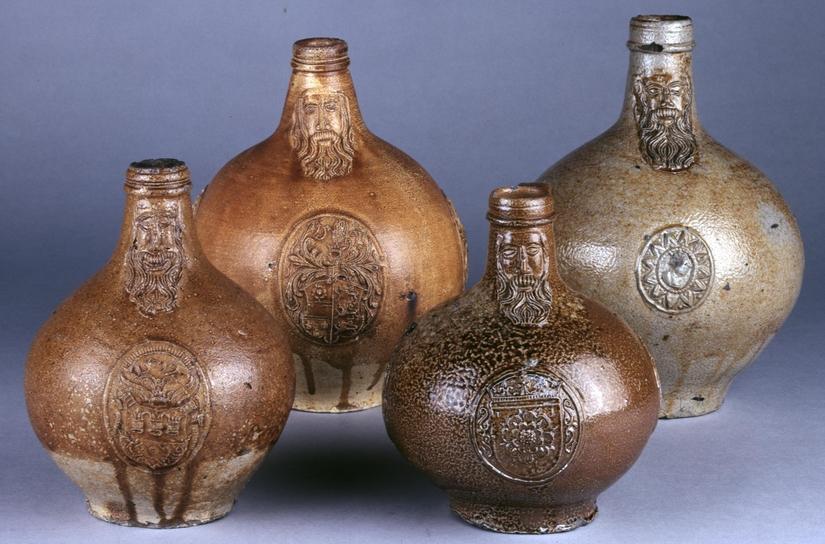‘Bartmann Goes Global - the cultural impact of an iconic object in the early modern period’ is a collaborative research project between the UK and Germany, funded by the Arts and Humanities Research Council (AHRC) and the Deutsche Forschungsgemeinschaft (DFG).
Bartmann jugs are easily recognisable with their distinctive bearded faces, bulbous shape, and medallions. They were produced in large quantities in the Rhineland, Germany, between 1500-1750. Many were exported, mainly to England, the Netherlands and across northern Europe.

The Global Spread of Bartmann Jugs
As a result of colonial expansion, Bartmann jugs travelled far outside Northern Europe. It wasn’t just the jugs which went global. The iconic Bartmann design inspired the creation of similar pottery in countries including Japan and Georgia. It also led to innovations such as the introduction of stoneware techniques to the UK.
Our Research
Our project aims to delve deeper into the significance of the Bartmann jug across the globe. We will explore the following key themes:
- Archival Sources: Examining historical documents related to the production, trade, and use of Bartmann jugs.
- Design & Technology: Studying the techniques used to create Bartmann jugs and how their design evolved over time.
- Jug Types: Creating a set framework to categorise the different styles of Bartmann jugs and their variations.
- Cultural Contexts: Understanding the cultural significance of Bartmann jugs in different societies.
- Scientific Analysis: Using modern scientific methods to analyse the composition of Bartmann jugs, revealing exactly where each was made.
- Global Distribution: Tracing the trade routes of Bartmann jugs and exploring their impact on different cultures.
Bartmann needs you
Do you have a Bartmann Jug in your collection, or have you found one during an archaeological dig? We’re collecting examples of Bartmann jugs from around the world.
Share your jug with us today and help transform our understanding of this iconic jug's global cultural and historical importance.